Revell 1/48 Bristol Beaufighter IC
The Beaufighter originated in 1938. During the Munich Crisis, the Bristol Aeroplane Company began private development of a long-range fighter capable of carrying heavy payloads under the leadership of Chief Designer Leslie Frise. Evaluation of the Beaufort torpedo bomber then entering production concluded the aircraft could developed further for greater speed and maneuverability. The prospective aircraft had to share the same jigs as the Beaufort so that production could easily be switched from one aircraft to the other. Bristol proceeded to suggest their concept for a fighter development of the Beaufort to the Air Ministry. The timing of the suggestion coincided with delays in the development and production of the Westland Whirlwind. While there was some skepticism that the proposed aircraft was too big for a fighter, the proposal was given a warm reception by the Air Staff. In October 1938, the project, which received the internal name Type 156, was outlined. In March 1939, the Type 156 was given the name Beaufighter.
The Air Ministry produced Specification F.11/37 in response to Bristol's suggestion for an "interim" aircraft, pending the proper introduction of the Whirlwind. On November 16, 1938, Bristol received formal authorization to commence the detailed design phase of the project and to proceed with the construction of four prototypes.
The Beaufort had modest performance. To achieve fighter-like performance desired for the Beaufighter, Bristol suggested that they power the new aircraft with a pair of their new Hercules engines, capable of around 1,500 hp, in place of the 1,000 hp Bristol Taurus engines on the Beaufort. The Hercules was a considerably larger and more powerful engine which required larger propellers. To obtain adequate ground clearance, the engines were mounted centrally on the wing, as opposed to the underslung position on the Beaufort.
Bristol took a partly-built Beaufort out of the production line to create the prototype Beaufighter. The designers expected that maximum re-use of Beaufort components would speed the process but the fuselage required more work than expected and had to be redesigned. A total of 2,100 drawings were produced during the transition from Beaufort to the prototype Beaufighter, more than twice as many were created during later development, between the prototype Beaufighter and the fully operational production models.
In general, with the exception of the powerplants used, the differences between the preceding Beaufort and Beaufighter were minor. The wings, control surfaces, retractable landing gear and aft section of the fuselage were identical to the Beaufort, while the wing center section was similar apart from certain fittings. The areas for the rear gunner and bomb-aimer were removed, leaving only the pilot in a fighter-type cockpit. The navigator-radar operator sat to the rear under a small Perspex bubble where the Beaufort's dorsal turret had been. Both crew-members had their own hatch in the floor of the aircraft. The front hatch was behind the pilot's seat. As there was no room to climb around the seat-back, the back collapsed to allow the pilot to climb over and into the seat. In an emergency, the pilot could operate a lever that remotely released the hatch, grasp two steel overhead tubes and lift himself out of his seat, swing his legs over the open hatchway, then let go to drop through. Evacuating the aircraft was easier for the navigator, as the rear hatch was in front of him and without obstruction.
On July 17, 1939, R2052, the first prototype, first flew, a little more than eight months after development had formally started. Two weeks prior to the prototype's first flight, an initial production contract for 300 aircraft under Specification F.11/37 was issued by the Air Ministry, ordering the type "off the drawing board". During trials, R2052, powered by a pair of two-speed supercharged Hercules I-IS engines, achieved 335 mph (539 km/h) at 16,800 ft (5,120 m) in a clean configuration. The second prototype, R2053, which was furnished with Hercules I-M engines and was fully equipped with armament of four Hispano 20mm cannon mounted in the lower fuselage, with six .303 machine guns in the wings - four in the right and two in the left - and other operational equipment, attained 309 mph at 15,000 ft. The performance of the second prototype was considered disappointing, particularly since the Hercules III engines of the initial production aircraft would likely provide little improvement, especially in light of additional operational equipment being installed.
On April 2, 1940, R2052 was delivered to the RAF, followed by R2053 two weeks later. On July 27, 1940, the first five production Beaufighters were delivered along with another five on August 3, 1940. These production aircraft incorporated aerodynamic improvements, reducing aerodynamic drag from the engine nacelles and tail wheel; the oil coolers were also relocated on the leading edge of the wing.
The first Beaufighter IF was delivered to the Fighter Interception Unit on August 12, 1940, with the first operational aircraft going to 29 and 604 Squadrons on September 2. The aircraft outperformed the Blenheim IF and IVF by a considerable margin. The Beaufighter was the primary British night fighter until the appearance of the Mosquito NF. II in 1942 and did not leave service in this role until late 1943. Seventy pilots became night fighter aces with the Beaufighter.
Following its introduction into Fighter Command, the Beaufighter was also adopted by Coastal Command. In early 1941, Bristol proceeded with the development of the Beaufighter Mk. IC long-range fighter.
This new variant of the Beaufighter entered squadron service in March/April 1941 with a detachment from 252 Squadron operating from Malta. This initial deployment proved highly successful, leading to the type being retained in the Mediterranean theater throughout the rest of the war. In June 1941, 272 Squadron based on Malta claimed the destruction of 49 enemy aircraft and the damaging of 42 more. The Beaufighter was very effective in the Mediterranean against Axis shipping, aircraft and ground targets; Beaufighters also cooperated with the British Eighth Army during action in the Western Desert Campaign, often in the form of ground strafing. Coastal Command was, at one point, the majority user of the Beaufighter, replacing its inventory of obsolete Beaufort and Blenheim aircraft.
The Kit:
Revell first brought out a TF X Beaufighter in 2018. This Beaufighter IF is the first “early” Beaufighter released in 1/48. The kit follows Revell-Germany's philosophy of doing things “at a price.” The kit provides a pilot's cockpit that is more detailed than the Tamiya kit. Decals are provided for two early night fighters in overall black finish.
Constructions:
This is a much more “fiddly” kit than the Tamiya Beaufighter. That said, it is far more detailed and accurate than the Tamiya kit, providing options that have never before been available without use of aftermarket resin parts.
As with many Revell kits, the instructions are frequently confusing and often wrong as regards instructing you in what to do. Assembly of the fuselage is not a problem, and is easily accomplished following the instructions. You can open the navigator's upper hatch, but unless you have done some scratchbuilding to provide more detail in there, it's better closed up. When you attach the pilot's canopy, be sure to get the front end down tight and aligned with the rest of the nose area.
The main problem with the kit involves assembling and attaching the landing gear successfully. First and foremost; DO NOT FOLLOW THE KIT ASSEMBLY SEQUENCE. If you do, it will lead to disaster.
The following assembly instructions are the result of building one of these kits following the “instructions” which ended in disaster when the landing gear “exploded” out of the gear wells and self-destructed, followed by a lot of thought and a second more successful attempt made on this kit, with a final attempt made on the TF X kit, which as a result of lessons learned was entirely successful. If you follow these instructions, you will have no problem with the assembly of this model:
-
Assemble the entire gear well “box,” including part E-99, the front wall that the gear attaches to, into a box. Set this aside and allow it to set up. When this is set up, paint it British Interior Green. Also paint the insides of the gear wells in the lower wing part inside the nacelles. Also paint parts E-101 and 102, the gear door attachment parts (there are two sets). DO NOT attach Part F-35, the forward gear well bulkhead, at this point; it will go on last.
-
You have to pre-paint the gear before assembly. My research has found that the gear legs are painted semi-gloss black. I used Tamiya X-18, Semi-Gloss Black. You also need to assemble and paint the main wheels.
-
Assemble the main gear legs per the instructions, including the main wheel. The rear gear legs (part E-97) need to be scraped down on the outside of the area of the part that is inserted into the gear well. Test fit until you get it to where it can slide in easily (this is the part that is just slightly too big and screws up assembly if you don't do this).
-
Attach the gear to the gear wells. Before proceeding with putting in Part E-97, cut off the little tabs at the end that attach to the gear leg, since they were molded reversed. Then take E-97 with parts E-91 and 92 and F-90 assembled and attached to E-97, get this assembly in position and attach to the gear legs and then glue in position inside the gear well.
-
Attach part F-35 and glue it firmly to all parts of the main gear leg that touch it.
-
Attach parts E-101 and 102 in their position.
Now that you have the entire gear and well assembled, slip them into the lower wing and glue into position. Voila! Everything fits. The pix attached should be able to guide you with this.
Once you have assembled the wing, you can proceed to attaching the engines. There is difficulty assembling and attaching the engines due to the fact that it is easy to attach them out of alignment.
Here is the assembly sequence I found to work successfully:
-
Prepaint the engine semi-gloss black; paint the interior of the cowlings British Interior Green; paint the interior of the exhaust collector ring (I used Tamiya “Metallic Grey”). DO NOT ASSEMBLE THE ENGINE AT THIS POINT.
-
Choose the intake you want for the version you are doing (parts 73 and 74, or parts 75 and 76), assemble them and glue them to the engine nacelle.
-
Attach the cowling flaps (either part 69 for closed or part 70 for open) and glue them to the intake so they are properly positioned.
-
There are two sub-assemblies to the engines and cowlings. DO NOT FOLLOW THE KIT INSTRUCTIONS. The problem here is that the parts do not have real positive attachment guides, so that you cannot get them in proper alignment if you follow the instructions. Do this:
A. Assemble the engine to the wing as follows:
1) attach the exhausts (part 57)to the assembled wing and be sure to get that “T” attachment right. 2) Attach the real half of the rear row of cylinders (part 58) to part 57 and again insure you have the position right regarding the position of the cylinders (one cylinder straight up. Then attach part 59, then part 60. BE SURE TO GET part 58 and Part 60 glued together tight (if you have the parts positioned right, this will be easy; difficulty means to re-check proper alignment).
B. Assemble the cowling separately. This is fiddly, so give the individual parts time to set up as you proceed through that. Assemble the cowling parts to the exhaust collector ring the way the instructions show. Set the assembled cowling aside to set up fully.
- Once the cowling is set up, slide it over the engine and glue it to the cowling flaps (part 69 or 70).
After you do this, the only thing left is to decide if you want the flaps up or down. As with most kits that have a lowered flaps option, the parts are happier open than closed, but you can assemble them up.
I found that when I attached the wings to the fuselage, it helped to use large rubber bands - one wrapped from engine to engine, and one from wingtio to wingtip, to get the wings to attach tightly to the fuselage.
The tail is straightforward. Choose whether you want to pose the control surfaces dynamically. At this point, it's time to proceed with painting.
Colors and Markings:
After wrapping the main gear with drafting tape, I first pre-shaded the model with flat black. Since I was doing a Coastal Command Beaufighter, I did the Temperate Sea Scheme. I used Tamiya “Sky” XF-21)lightened with 10 percent Flat White XF-2, since the color out of the bottle is too dark. Dark Sea Grey was done with “Dark Grey” XF-24, and Dark Slate Grey was done with “Khaki Drab” XF-51, with 10 percent “RLM Grey” XF-22. This was done in the “twin engine scheme” for the upper surfaces as shown in the old Profile Publications “Beaufighter Camouflage and Markings.” Each color was “post shaded” by adding in some light grey and going over the painted area to simulate sun fading. I masked off the engine cowlings and painted the exhaust collector ring and exhaust with Tamiya “Metallic Grey” XF-56.
The photo I was using as a guide showed that the props had been “sand blasted” over nearly half their length. After painting the props with Tamiya Semi-Gloss Black X-18, I used Vallejo “Dull Aluminum” to simulate the wear.
I used a combination of kit decals and decals from the dungeon to do a Beaufighter from 252 Squadron in the Western Desert, circa summer 1942. Once done, I washed off decal solvent residue and gave the model an overall coat of Clear Flat.
I unmasked the canopies and attached the pilot's escape hatch in the open position. After cutting off the pivots, I slid the entry hatches into position in the lower fuselage. I attached the flaps and props, and called it finished.
Conclusions:
This is a kit that really makes you work for your progress; it is a definite battle, but when you finally win you have something nice. The Revell kit is far more detailed than the Tamiya kit – the opposite of the Mosquitos, where the Tamiya kits shine and the Revell kit qualifies as a Mosquito(ish).
Recommended for modelers with experience in successfully battling a model into submission who are Serious Beaufighter Fans.
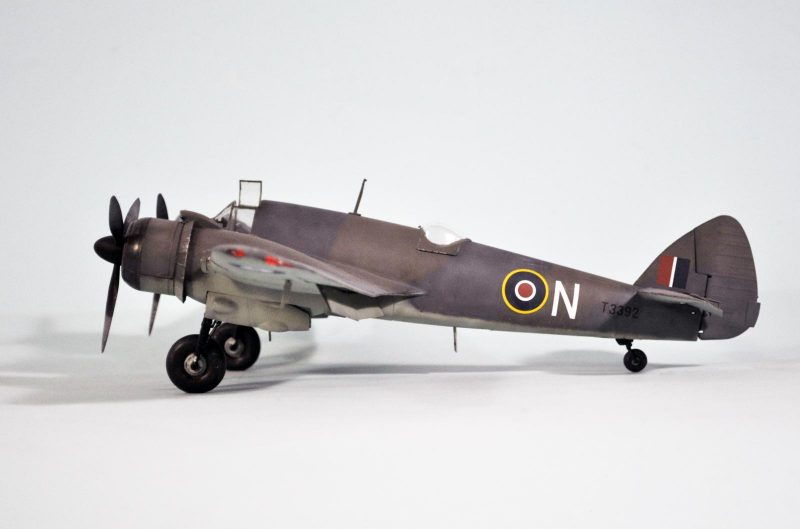
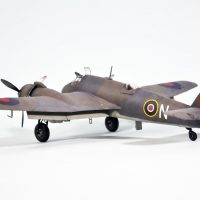
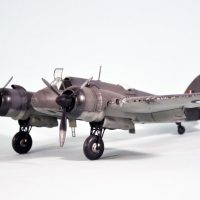

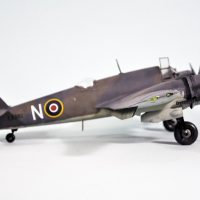
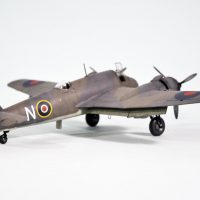
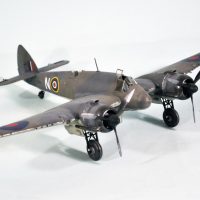
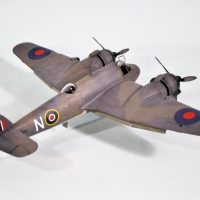
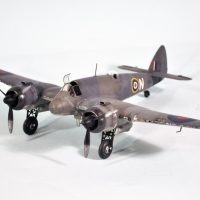
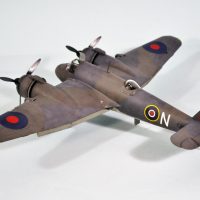
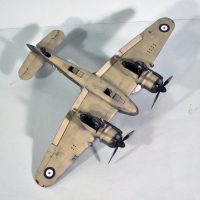
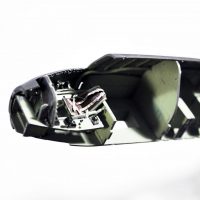
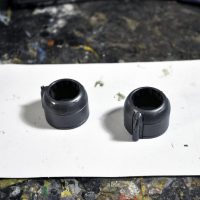
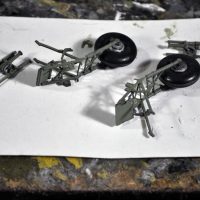
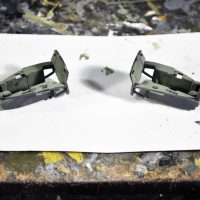
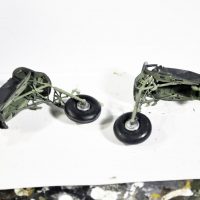
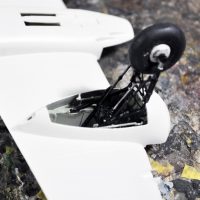
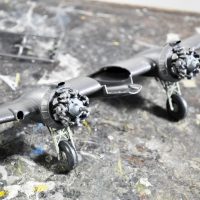
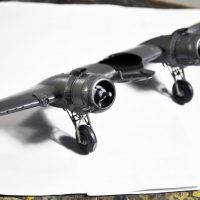
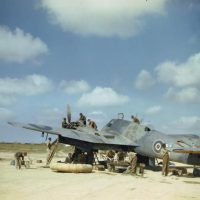
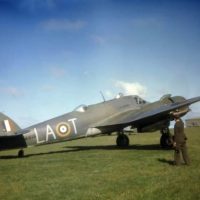
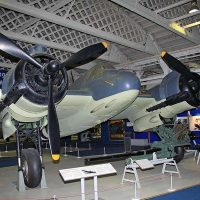
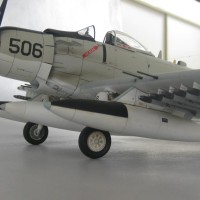
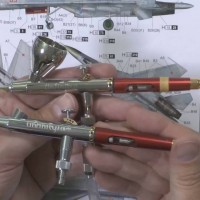
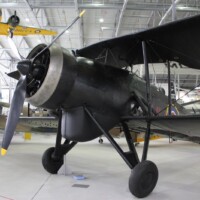
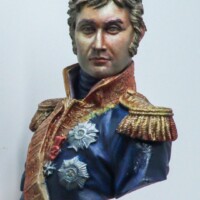
Looks great.
Your usual excellent job and historical support, Tom!
A real bonus is the instructions-of-how-to-avoid-catastrophe provided!
Thats a really well done Beau!
I remember building the original Airfix 1/72 kit when I was a kid in the 50s and have always had a liking for this twin engined fighter. Your offering is excellent, as is your write-up.
Great build Tom. I will be following your construction tips when I get around to pulling it out of the stash.
Smart work, Tom... nice clean lines on the Beaufighter, but still lethal looking. You got a nice finish on this one.
Regards,
Paul
That turned out well in the end, Tom.
After it was battered into submission. 🙂
A great looking Beaufighter, as to be expected, from the Cleaver stable. I like this one Tom! How does it compare with the Tamiya offering in 1/48?
It is "more detailed and more fiddly."
Great job , thanks for the tips.
Great build, Tom.
Thanks for sharing us the correction on building instructions.
Have this one on my wishlist as well, so your remarks will for sure be helpful.
Nice Beau Tom. I was thinking of picking one of these up and your build makes it more likely.
Glad to be "of service," sir.
Nice looking Beaufighter, Tom (@tcinla). The cockpit and the camouflage really look the part. I am slowly trudging through a conversion of a 1/72 Airfix Beaufighter, so it is great to get some inspiration. I have this kit in my stash, so thanks for the build info.
Very nice Beau - love the paintwork on this one especially.